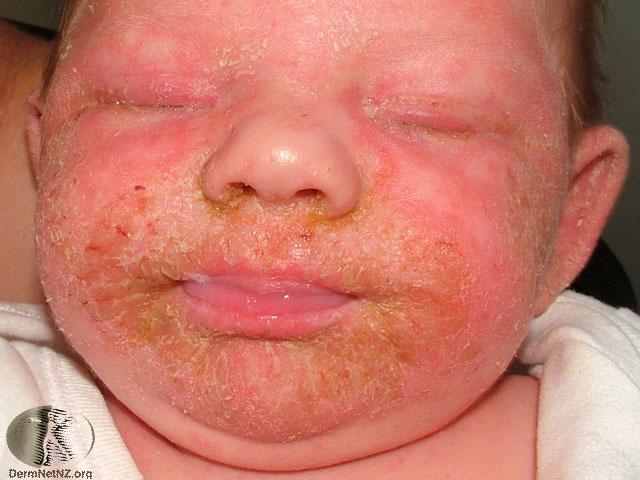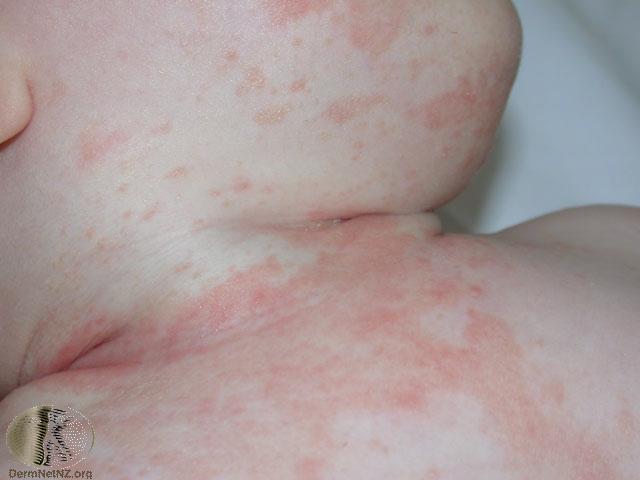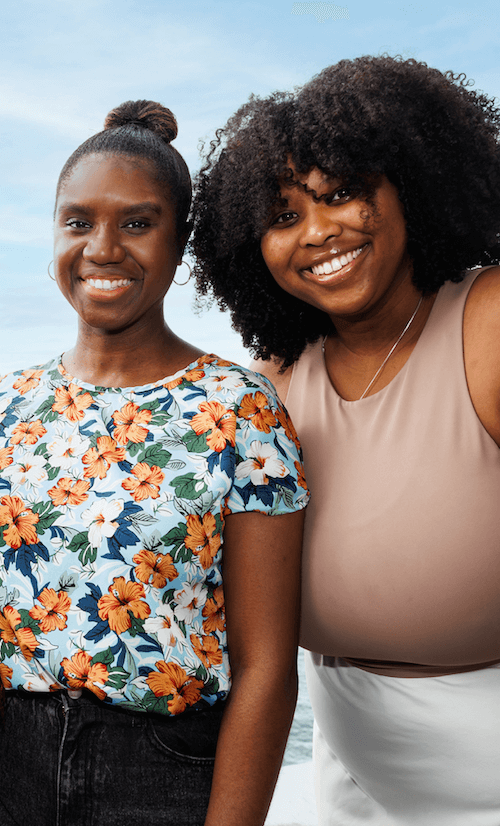Seborrheic Dermatitis in Children
What is seborrheic dermatitis?

Seborrheic dermatitis on an infant’s scalp is known as “cradle cap.”
Photo courtesy of DermNet New Zealand
Seborrheic dermatitis (seb-uh-REE-ick dur-muh-TIE-tis) occurs in areas of the body where there are a lot of oil-producing glands such as the scalp, nose and back. In infants, seborrheic dermatitis usually appears on the scalp and is commonly known as “cradle cap.” In older children and adults, seborrheic dermatitis on the scalp is typically called dandruff.
The exact cause of seborrheic dermatitis is unknown, but it is believed to be a combination of factors including genes, yeast that lives naturally on the skin, stress, chemical irritants and/or dry, cold weather that causes the skin to overproduce oil. In infants, researchers believe seborrheic dermatitis is triggered in part by hormones from the mother.
Unlike other forms of eczema, seborrheic dermatitis is not the result of an allergy.
What are the symptoms of seborrheic dermatitis in children?
Sometimes seborrheic dermatitis appears on the infant’s face, especially around the eyes and nose area. It can also appear in the diaper area and in the folds of babies’ skin.
Seborrheic dermatitis in infants typically goes away at ages 6 to 12 months. Dandruff usually persists into adulthood.
In infants and children, seborrheic dermatitis can appear on the scalp or body as:

A severe case of seborrheic dermatitis in an infant. Note the yellowish crust and scale. Photo courtesy of DermNet New Zealand
- Yellow crust
- Red skin with white or yellow flakes on top
- Pink patches that join with the red skin
- Swollen areas of skin
For the most part, babies are unbothered by the symptoms of seborrheic dermatitis. For more severe cases, it is important to be on the lookout for any signs of infection such as skin that feels hot, weeps fluid or smells bad. Contact your health care provider if you suspect your child has an infection.
Treatment for seborrheic dermatitis in children
If the seborrheic dermatitis is mild, an OTC topical antifungal cream or medicated shampoo with ketoconazole, selenium sulfide, coal tar or zinc pyrithione, may be enough to control symptoms. It is OK to leave mild seborrheic dermatitis untreated if your child is not uncomfortable.

A seborrheic dermatitis rash on an infant’s head, neck and torso.
Photo courtesy of DermNet New Zealand
In more severe cases, a provider may prescribe topical steroids or TCIs to calm the inflammation. Oral antifungal agents may also be used.
Try the following home remedy for cradle cap:
- Apply plain mineral oil or petroleum jelly to your baby’s scalp about an hour before bathing to loosen scales.
- Gently massage shampoo into the scalp for a few minutes to remove the scales. A dandruff shampoo works best but can sting if it gets into the eyes.
- Rinse well and gently pat dry.

